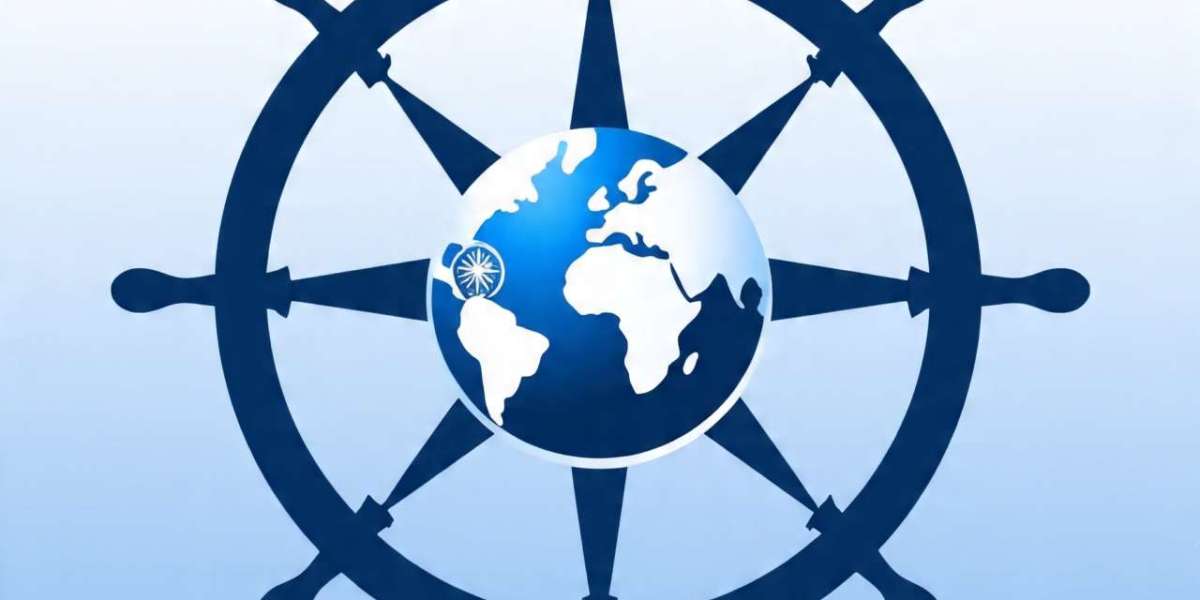The creation of the International Society of Natiometry (ISN) marks a major turning point in the field of global governance and scientific research. This reference document is designed to formalize the vision, mission, and strategic objectives of the ISN, while defining the roles and responsibilities of its members. It outlines the six main development pillars on which the ISN is committed to working to become a key player in the measurement and understanding of the nation phenomenon. Each point is detailed to clarify how the ISN plans to positively influence public policies, international stability, sustainable development, and relations among nations. This document will serve as a strategic guide for all internal collaborators, providing a shared foundation for reflection and action for the future of Natiometry. It is essential to remain agile and adaptive to meet the challenges of our ever-changing world. Together, by following these six strategic points, we can transform Natiometry into a valuable asset for humanity, contributing to a more just, sustainable, and prosperous future.
Main Content: The Six Pillars of the ISN
- Scientific and Methodological Foundations
- Introduction to Natiometry, its fundamental principles, and its methodological framework.
- Definition and validation of the Natiometer as a tool for analyzing and diagnosing nations.
- Objectives: Establish a new standard for measuring national phenomena through rigorous scientific modeling.
- Research Development and Processes
- Description of research processes, the teams involved, and the interdisciplinary collaborations required.
- Data collection and analysis methodologies, including advanced technologies like artificial intelligence and machine learning.
- Objectives: Generate unprecedented knowledge for the understanding and governance of nations.
- Strategic Positioning
- Integration of Natiometry into the existing international framework.
- Relations with global and regional organizations, including the UN, OECD, and other key institutions.
- Objectives: Strengthen the ISN’s visibility and influence in global discussions on governance and development.
- Technological Development
- Continuous evolution of the Natiometer to address emerging global challenges.
- Exploration of synergies with emerging technologies such as biotechnology, quantum AI, and human-machine interfaces.
- Objectives: Keep the tool at the cutting edge of technology for increasingly precise and relevant analysis.
- Collaboration and Partnerships
- Strategies for collaboration with academic, industrial, and governmental entities.
- Strategic partnerships for technological development, knowledge dissemination, and political influence.
- Objectives: Build a community of practice around Natiometry to foster innovation and share best practices.
- Global Impact and Long-Term Vision
- The ISN’s vision for the future: how it aims to create a lasting influence on the global landscape.
- Establishing offices in the capitals of all 200 countries for global representation.
- Objectives: Create a worldwide network of knowledge and collaboration for more informed and balanced governance.
Introduction
The International Society of Natiometry is committed to becoming a key player in global governance by integrating Natiometry as an essential scientific tool. This reference document represents the foundation upon which our vision and strategy are built, providing our collaborators with a clear and motivating roadmap for the future. It is essential to remain agile and adaptive to meet the challenges of our ever-evolving world. Together, by following these six strategic points, we can transform Natiometry into a valuable asset for humanity, contributing to a more just, sustainable, and prosperous future.
1. Organizational Structuring
A. Governance
- Board of Directors:
- International representation to ensure diversity and inclusivity.
- Key members: scientists, public policy experts, technicians, and civil society representatives.
- Role: Define the strategic vision and oversee major decisions.
- Scientific and Technical Committee:
- Experts in humanities, physical and biological sciences, and artificial intelligence.
- Role: Validate methodologies, guide the development of the Natiometer, and ensure scientific rigor.
- General Directorate:
- Responsible for the operational activities of the ISN.
- Key departments under the General Directorate:
- Research and Development: Scientific and technological innovation.
- International Relations: Cooperation with governments, the UN, and other organizations.
- Communication and Advocacy: Awareness campaigns and public relations.
- Administration and Finance: Internal management, fundraising, and audits.
B. Regional and National Offices
- Regional Offices:
- Located in strategic capitals (e.g., Geneva for Europe, Nairobi for Africa).
- Role: Coordinate activities within regions.
- National Representations:
- Presence adapted to the specific needs of each country.
- Priority given to major powers and transitional countries.
C. Collaborative Networks
- Partnership Committee: Establish collaborations with universities, think tanks, companies, and NGOs.
- Advisory Committee: Include citizens and community leaders to integrate local perspectives.
D. Digital Platform (SPACESORTIUM already online: spacesortium.com)
- Virtual Coordination Space:
- A collaborative online platform connecting offices, partners, and NGO members.
- Tools: Instant communication, data sharing, project management, and collective intelligence.
2. Main Missions and Objectives of the International Society of Natiometry (ISN)
The primary mission of the ISN is to promote Natiometry as an innovative scientific discipline and leverage its tools to improve governance, economic intelligence, and the overall well-being of nations. Below are its detailed missions and associated objectives:
A. Missions of the ISN
- Scientific Development and Validation
- Continue refining and validating the Natiometer as a universal scientific tool for measuring and diagnosing nations.
- Ensure the standardization of Natiometry methodologies and protocols.
- Training and Education
- Offer training programs to create a new generation of qualified natiometricians.
- Collaborate with universities to integrate Natiometry into academic curricula in social, political, and technological sciences.
- Advising Governments and Institutions
- Provide diagnostic services for nations through the Natiometer to support informed decision-making by governments.
- Develop strategic recommendations to enhance social cohesion, economic performance, and environmental sustainability.
- Interdisciplinary Research and Innovation
- Foster collaboration across disciplines (human, social, exact, and technological sciences).
- Explore new approaches to visualize and understand the complex dynamics of nations.
- Global Awareness and Advocacy
- Promote Natiometry among the public and decision-makers as an essential discipline for addressing global challenges.
- Organize international events (forums, symposia, conferences) to raise awareness of the importance of nation diagnostics.
- Contribution to Peace and Sustainable Development
- Support the UN’s Sustainable Development Goals (SDGs) by using Natiometry to evaluate and guide nations’ progress.
- Contribute to conflict prevention by identifying points of tension before they escalate.
B. Strategic Objectives
- Short-Term (1-3 years)
- Finalize scientific protocols and publish the theoretical foundations of Natiometry.
- Develop an operational prototype of the Natiometer.
- Organize the first international conference on Natiometry.
- Medium-Term (4-7 years)
- Establish partnerships with governments and international institutions to test the Natiometer.
- Train 500 natiometricians in partner institutions.
- Launch a global platform to share nations’ diagnostics.
- Long-Term (8-15 years)
- Integrate Natiometry into global governance frameworks.
- Extend its use to all UN member nations.
- Become the global reference for scientific diagnostics and governance solutions.
Approach for Implementation
The International Society for Natiometry (ISN) should focus its missions and objectives on three key pillars:
- Science: Ensuring scientific rigor and validation.
- Technology: Leveraging digital tools and AI to develop and deploy the Natiometer.
- Diplomacy: Collaborating with governments and international organizations to maximize global impact.
3. Strategic Positioning of the International Society for Natiometry (ISN)
Strategic positioning is crucial to establish ISN as a global reference organization for national diagnostics and scientific governance. The following axes define this positioning:
A. Institutional Anchoring
- Advisory Member at the UN
- Act as an independent expert providing scientific diagnostics to support United Nations initiatives.
- Actively contribute to discussions on Sustainable Development Goals (SDGs) and global governance mechanisms.
- Academic Recognition
- Collaborate with universities and research institutions to formalize natiometry as a scientific discipline.
- Publish in international scientific journals to establish the credibility of the discipline.
- Strategic Partner to Governments
- Offer tools and training to governments to improve governance and public policies.
- Establish partnerships with development agencies, central banks, and other key institutions.
B. International Visibility
- Global Summits and Conferences
- Launch a Global Natiometry Forum to gather experts, decision-makers, and civil society members.
- Participate in major international events such as the World Economic Forum and COP conferences.
- Targeted Communications
- Implement a multi-channel communication strategy (articles, documentaries, digital platforms).
- Promote natiometry as an essential tool to tackle global challenges, including climate, economic, and social crises.
- Local and Global Presence
- Open offices in strategic capitals to ensure local engagement while fostering international cooperation.
C. Leadership in Innovation
- Pioneering Role
- Position ISN as the first organization integrating technology, science, and governance for comprehensive national diagnostics.
- Make the Natiometer the benchmark standard for evaluating nations.
- Adoption of New Technologies
- Partner with high-tech companies and research labs specializing in artificial intelligence and supercomputing.
- Stay at the forefront of the digital revolution and data-driven approaches (big data).
D. Relations with Civil Society and the Private Sector
- Inclusive Dialogue
- Create platforms for citizens to voice their perspectives on their nation using Natiometer diagnostics.
- Encourage NGOs and community organizations to use these diagnostics for local actions.
- Private Sector Engagement
- Collaborate with businesses on initiatives related to economic intelligence and sustainable development.
- Provide diagnostics tailored to the needs of multinational corporations and local industries.
E. Cultural and Educational Influence
- Education and Awareness
- Develop educational tools to integrate natiometry into schools and universities.
- Educate youth on the importance of enlightened governance based on scientific diagnostics.
- Cultural Outreach
- Promote a global vision of humanity as interconnected and interdependent through the concept of nations as meta-systems
4. Financing and Sustainability of the International Society for Natiometry (ISN)
Financial sustainability for ISN relies on a balanced strategy combining various funding sources, strategic partnerships, and revenue-generating initiatives. A structured approach includes:
A. Funding Sources
- Membership Contributions
- Member Categories:
- Institutional Members (governments, international organizations).
- Academic Members (universities, research institutes).
- Individual Members (scientists, experts, interested citizens).
- Membership fees tailored to categories, offering benefits such as exclusive access to publications and tools.
- Grants and Public Partnerships
- Solicit support from the UN, World Bank, and SDG-related funds.
- Develop bilateral partnerships with governments for projects related to governance and sustainable development.
- Collaborations with the Private Sector
- Offer personalized diagnostics to businesses for their economic and social strategies.
- Encourage corporate philanthropy from companies interested in sustainable governance and national diagnostics.
- Natiometer-Related Revenues
- Licensing: Allow governments and organizations to use the Natiometer for a fee.
- Analysis and Consulting Services: Provide detailed reports and tailored strategic recommendations.
- Training and Certification: Train professionals and certify natiometrists.
- Research and Innovation Grants
- Participate in national and international calls for projects in social sciences, AI, and governance fields.
B. Financial Sustainability Strategies
- Hybrid Business Model
- Balance for-profit initiatives (services, training) with non-profit efforts (government advice, public awareness).
- Creation of a Reserve Fund
- Allocate a portion of annual revenue to a fund ensuring continuity during financial crises.
- Partner Networks
- Build a network of long-term financial partners emphasizing the collective benefits of accurate national diagnostics.
C. Transparency and Resource Management
- Auditing and Reporting
- Publish annual financial reports to strengthen trust among partners and members.
- Use independent auditors to validate accounts.
- Fund Allocation
- Prioritize expenditures on research and technological development while reserving funds for awareness campaigns and educational projects.
- Monitoring and Evaluation
- Regularly assess the impact of funded initiatives to adjust strategies and maximize results.
D. Innovations in Fundraising
- Digital Platforms
- Launch a crowdfunding platform for specific ISN projects.
- Event Organization
- Host paid conferences, seminars, and workshops with renowned speakers and international participants.
- Publication and Content Sales
- Publish white papers, reports, and in-depth studies for sale to the general public and experts.
This strategy aims to make ISN financially autonomous while aligning its resources with its objectives.
5. Collaboration and Partnerships of the International Society for Natiometry (ISN)
Collaboration and partnerships are essential to maximize ISN's impact and reach. By working with diverse entities, ISN can enhance its scientific, technological, and diplomatic capacities while promoting global adoption of natiometry.
A. Strategic Partnerships
- Institutional Partnerships
- United Nations and Affiliated Agencies: Collaborate with organizations like UNESCO, UNDP, and UNICEF to integrate natiometry into global development and governance projects.
- Regional Institutions: Work with entities like the European Union, African Union, and ASEAN to promote regional diagnostics tailored to local specificities.
- National Governments: Establish bilateral partnerships to help states adopt natiometry-based tools in their political and economic strategies.
- Academic Partnerships
- Universities and research centers: Cooperate to develop natiometry as an academic discipline, creating study programs, chairs, and specialized labs.
- Interdisciplinary Collaborations: Involve experts from social sciences, mathematics, physics, biology, and digital technologies to enrich natiometry's scientific scope.
- Technological Partnerships
- Technology Companies: Collaborate with leading firms in AI, big data, and supercomputer design to develop and enhance the Natiometer.
- Innovative Startups: Encourage startups to explore natiometry applications in areas such as data management, predictive analysis, and visualization.
B. Collaborative Networks
- International Platforms
- Creation of a Global Natiometry Alliance: Bring together public, private, academic, and civil actors around a shared vision to promote the use and development of natiometry.
- Participation in Global Forums: Engage with platforms such as the World Economic Forum, climate summits (COP), and digital governance conferences.
- Communities of Practice
- Scientific Networks: Facilitate exchanges between researchers and professionals from various disciplines to enrich the methodology and practical applications of natiometry.
- Community Engagement: Encourage NGOs, think tanks, and local associations to adopt diagnostic tools developed by the International Society of Natiometry (SIN).
C. Cooperation with Civil Society
- Awareness and Training
- Provide educational resources and training for citizens to understand and utilize national diagnostic results.
- Collaborate with media outlets to disseminate accessible and transparent information about the state of nations.
- Citizen Mobilization
- Encourage active citizen participation in evaluating their societies using interactive tools powered by the Natiometer.
D. Engagement with the Private Sector
- Corporate Services
- Offer tailored solutions to help companies better understand the socio-economic environments in which they operate.
- Develop collaborative models to integrate corporate data into national analyses.
- Corporate Social Responsibility (CSR)
- Promote natiometry as a lever to enhance the social and environmental impact of businesses, thereby strengthening their contribution to the Sustainable Development Goals (SDGs).
E. Partnership Governance
- Collaboration Charter
- Draft a clear charter defining the roles, responsibilities, and ethical principles of partners.
- Monitoring and Evaluation
- Implement a system to assess the impact of collaborations and adjust strategies as needed.
- International Coordination
- Establish a dedicated unit within SIN to manage and expand partnerships globally.
6. Global Impact and Long-Term Vision of the International Society of Natiometry (SIN)
The sixth point outlines how the SIN can influence the global landscape sustainably and establish an ambitious roadmap for the future. The goal is to integrate natiometry as a universally recognized, applied, and essential discipline for human governance and scientific progress.
A. Expected Global Impact
- Enlightened Global Governance
- Rationalizing Public Policies: Governments can utilize the Natiometer to base decisions on precise and multidimensional data, reducing guesswork and conflicts.
- Reducing Inequalities: By accurately identifying social, economic, and environmental disparities, SIN can guide strategies for balanced development.
- Promotion of Peace and Stability
- Crisis Prevention: With predictive diagnostics, SIN can anticipate and help defuse internal and cross-border conflicts.
- Scientific Diplomacy: Using the universal language of data and science, SIN can unite nations around shared and common objectives.
- Sustainable Development
- Contributions to the SDGs: Natiometry could become a key tool for measuring and accelerating progress toward the Sustainable Development Goals (SDGs).
- Environmental Monitoring: The Natiometer's cross-referenced data can provide clear perspectives on human activities' impact and guide sustainability policies.
B. Long-Term Vision
- Institutionalizing Natiometry
- Academic: Establish formal academic departments in leading universities worldwide.
- Professional: Develop natiometry as a recognized career with international training and certification standards.
- Continuous Technological Development
- Evolving the Natiometer: Incorporate emerging technologies such as quantum AI, human-machine interfaces, and autonomous learning systems to enhance the Natiometer's analytical capabilities.
- Universal Accessibility: Deploy accessible, localized versions of the tool for citizens, small organizations, and regional governments.
- A Universal Reference Framework
- SIN could become the custodian of a global framework offering a shared vision of nationhood, identity, and sovereignty while respecting cultural diversity.
- Fostering a Global Consciousness
- By highlighting the interconnectedness of nations and their shared challenges, SIN can play a key role in cultivating collective planetary awareness.
C. Progressive Institutional Development
- International Representation
- Offices in Major Capitals: Ensure a presence in all global regions to facilitate collaboration and adoption of natiometry.
- Partnerships with International Organizations: Be recognized as a key reference by global institutions such as the UN, OECD, and World Bank.
- Regional Expansions
- Establish regional centers tailored to geographical, cultural, and socio-economic specificities.
- Intellectual Leadership
- Host international conferences, publish annual reports, and become the definitive scientific voice on governance and nation-related issues.
D. Measuring Impact and Evolving
- Periodic Evaluation
- Conduct regular assessments of SIN's tools and initiatives to ensure their relevance and effectiveness.
- Adaptability
- Ensure SIN’s methodologies and tools evolve in response to new global challenges such as technological, climatic, or geopolitical transformations.
- Passing the Torch to Future Generations
- Develop educational programs to involve young people and train them in this discipline to ensure its longevity.
E. Legacy and Ultimate Ambition
- Scientific Legacy
- Position natiometry alongside the great scientific advancements that have transformed human society, such as the industrial and digital revolutions.
- A New Era of Human Governance
- Establish SIN as a key player in a global system where science, technology, and diplomacy collaborate for enlightened and equitable nation management.
Conclusion
The creation of the International Society of Natiometry (SIN) marks a pivotal step in understanding and measuring national phenomena globally. By adopting a rigorous, interdisciplinary scientific approach, SIN aims to become a key actor in global governance, transforming natiometry into an indispensable tool for more enlightened and balanced governance. The six development axes identified in this document provide a clear roadmap for our strategic vision. We firmly believe that collaboration, innovation, and adaptability are essential to addressing the challenges of our time. Together, we can shape a future where natiometry contributes to a fairer, more sustainable, and prosperous world.










LAMRANI AMIROUCHE 1 ans
Magnifique.